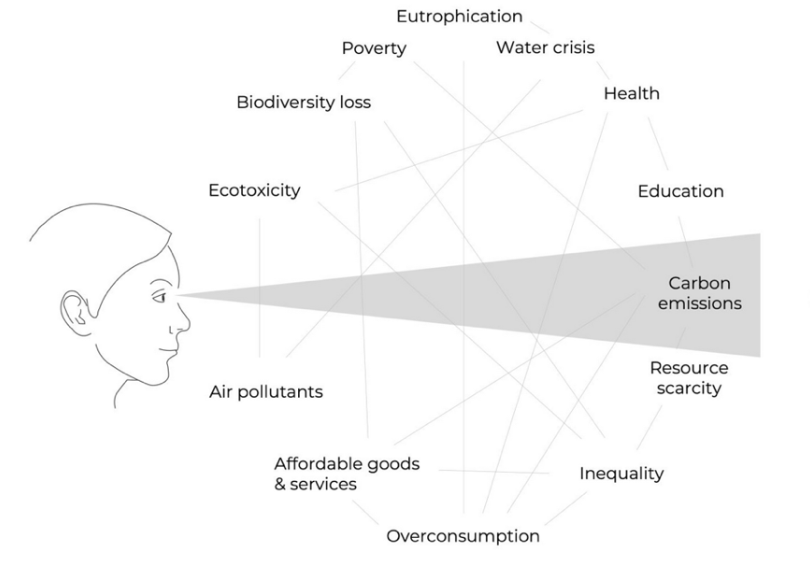Over the past 15 years, sustainability has evolved through a series of focal points: deforestation, the ozone layer’s recovery, melting ice caps. Each issue has commanded global attention at one time or another, reflecting the dynamic challenges of environmental stewardship. Today, however, the narrative is dominated by one metric: carbon.
Reducing emissions, achieving net-zero, and setting ambitious carbon targets have become shorthand for environmental progress. While this focus is essential, there’s a risk that by concentrating too heavily on carbon, we may fall into what’s called “carbon tunnel vision.” This narrow lens can overshadow the broader, interconnected web of sustainability, leading us to miss the bigger picture.

Beyond Carbon: Embracing a Holistic Vision of Sustainability
Yes, reducing carbon emissions is vital in addressing climate change. But sustainability is not—and should never be—just about carbon. Other critical dimensions such as water scarcity, soil health, biodiversity loss, and community resilience are equally essential. When these elements are sidelined, we risk creating solutions that tackle one problem while exacerbating others.
For example:
- Cutting emissions from agriculture may inadvertently harm soil health or biodiversity.
- Renewable energy projects, while reducing carbon, can disrupt local ecosystems or communities if poorly managed.
- Urban developments aiming for energy efficiency might neglect green spaces, vital for biodiversity and mental health.
True sustainability requires viewing these challenges not as isolated issues, but as interconnected pieces of a system.
From Targets to Systems Thinking
In my work as a GHG and carbon specialist, I’ve learned the value of stepping back to consider the broader context. Sustainability is not a single target to achieve—it’s a complex system to nurture. Progress often comes from balancing trade-offs and making thoughtful decisions that benefit the system as a whole.
For instance:
- Instead of solely asking, “How do we lower emissions?” we should also ask:
- “How can we restore ecosystems?”
- “How are we supporting local communities in adapting to climate change?”
- “Are we building resilience into natural and human systems for the future?”
This approach doesn’t dilute the importance of carbon reduction but enriches it. By integrating multiple facets of sustainability, we create solutions that are not only more robust but also more equitable.

Rethinking Metrics for Success
Imagine if we measured sustainability success by more than just our carbon footprint:
- Water footprint: Are we conserving and regenerating water resources?
- Biodiversity gains: Are we restoring habitats and reversing species loss?
- Social impact: Are we improving lives and strengthening communities?
These complementary metrics provide a fuller picture of progress. They remind us that sustainability is a journey, not a destination—a process of continuous improvement, where success is measured in diverse and meaningful ways.
The Challenge: Seeing the Whole Puzzle
Can we challenge ourselves to see carbon reduction as one piece of a much larger, richer, and more complex puzzle? Doing so requires a shift in mindset—from seeing sustainability as a checklist of goals to viewing it as a dynamic, interconnected system.
By broadening our perspective, we can address today’s challenges while laying the foundation for a resilient, flourishing future. Carbon is crucial, but it’s not the whole story. Let’s step back, embrace the complexity, and work towards a truly sustainable world.

